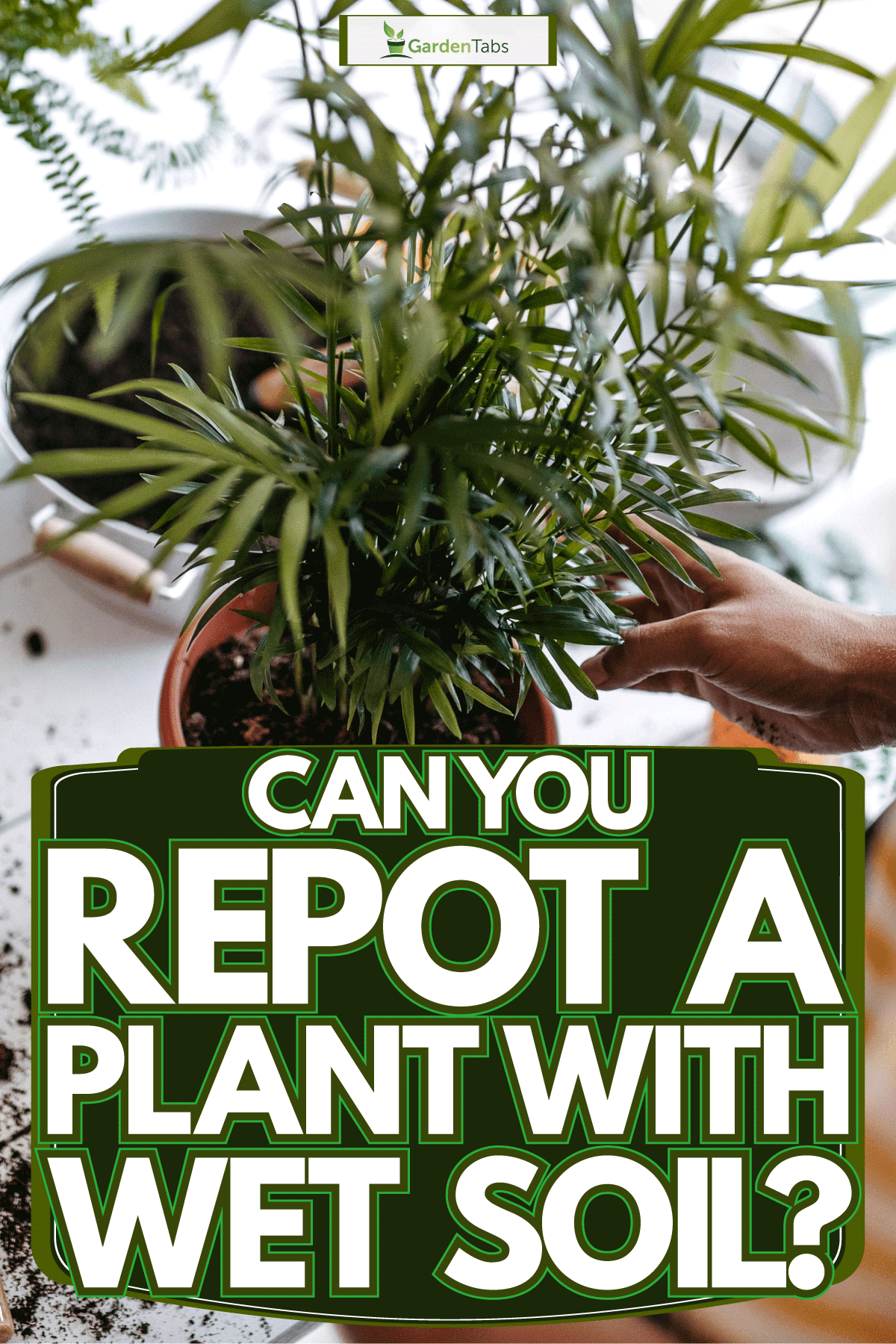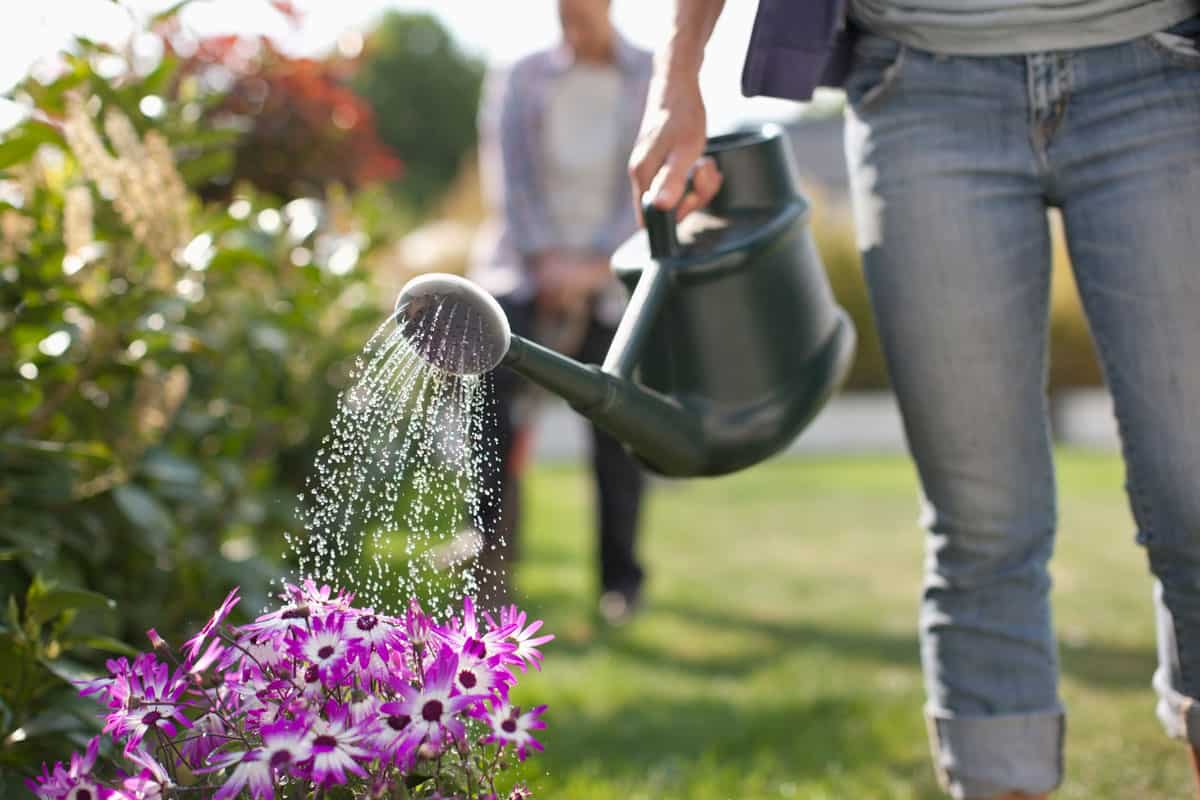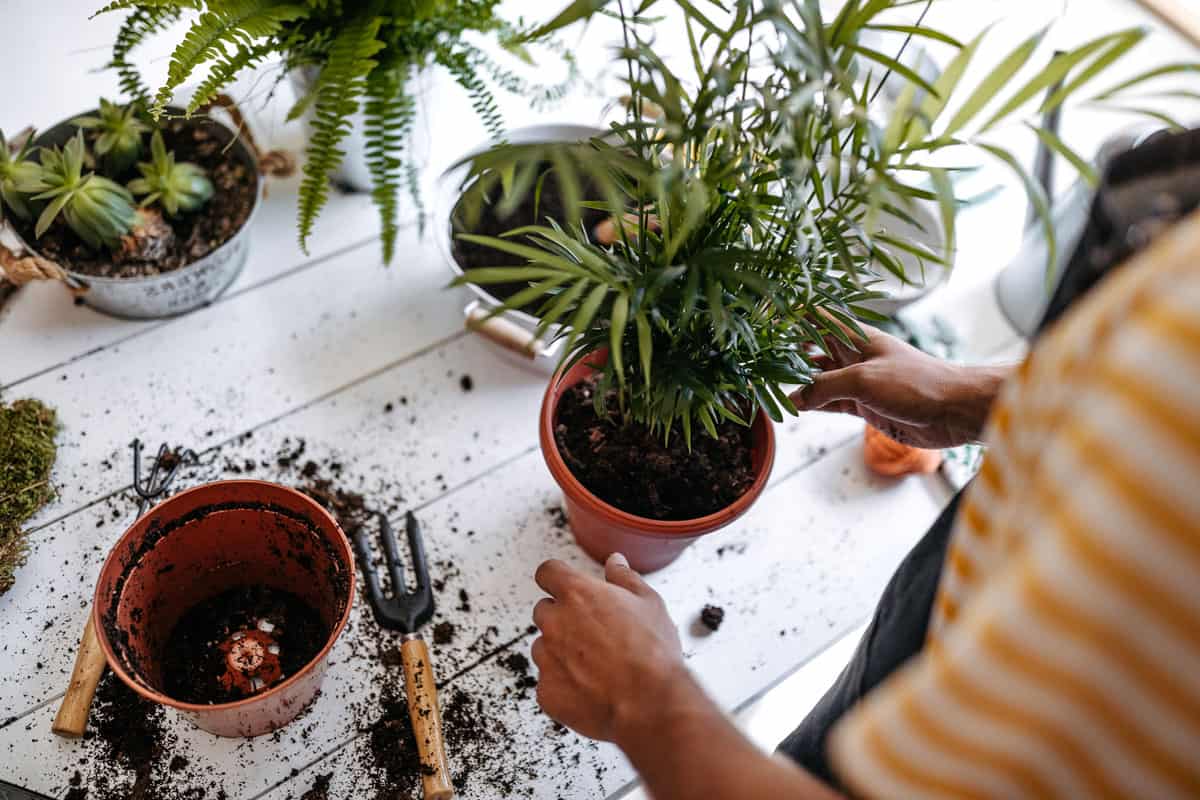Keeping your garden green and healthy can sometimes feel like an uphill battle. Do you want to repot a few plants but have no idea what soil conditions are best? Should you repot a plant with wet soil? Should the dirt you use be completely dry?
Well, we've done some research and have the answer below! Let's discuss.
You generally want to repot a plant using moist but not soaked soil. For example, the best potting mix tends to feel slightly damp, allowing the new plant to settle in a bit easier.
With that said, be careful with how wet your soil is. The last thing you want to do is drown your plant before it gets the chance to acclimate into its new environment.
As we begin, we will cover all things repotting and discuss what type of soil conditions work best. Whether it's time for a new garden aesthetic or you need to move one specific plant, we're here to offer some guidance. With that said, let's dive head first into this topic!

Should Soil Be Wet For Repotting?
Ideally, you want to use somewhat moist soil for repotting a plant. This will generally feel damp to the touch but not so wet your potting mix is dripping or soggy.
Using damp soil for repotting will make this process easier. As we said, the damp soil allows your newly transplanted shrub/tree to acclimate faster.
That can be essential for root growth and health, which makes using slightly wet dirt even more critical.
However, you don't want your potting mix to be so wet it kills your new plant. For example, if you want to repot something and water it in the ground beforehand, we don't recommend going crazy with more moisture in the new soil.

Even plants that love damp environments can only handle so much extra water, so keep this in mind.
According to Violet Barn, your plant may not need further watering for a day or two if the new potting mix is already moist. That means you don't need to add extra water for 24-48 hours or until your repotted plant begins to dry.
Can I Repot A Plant With Dry Soil?
Although you can use dry soil for repotting, there's not much reason to do this. Since dry soil won't compact as well as moist, this can mean a bigger mess.
Furthermore, super dry dirt isn't going to make for a great home for a newly transplanted plant. So, adding some water to your mix is generally better to make things easier.
You also want to consider how the roots of your plant look. If they seem dry during the repotting process, this could also be an issue if you use dry soil.
Therefore, the more moist your new potting mix, the better your potentially thirsty plant will acclimate. Remember, no plant wants to be ripped from one environment to another without the proper conditions.
What Type Of Soil Should I Use For Repotting?

The best option for repotting is a classic potting mix. Not only will potting soil be packed with nutrients, but it will also be a bit damper than other products.
Generally, a potting mix will contain peat moss and pine bark to retain moisture for your new plant. As we mentioned, this is crucial for a newly moved plant, as it needs as much moisture as possible.
Additionally, potting mix is helpful for those not wanting to add organic matter to regular dirt. Often, this will already be done, so all you need to do is dump the bag into the ground.
Most potting mixes also have great drainage, preventing root rot and water-related issues. Even though a newly transplanted plant will need moisture galore, that doesn't mean its ground shouldn't be able to drain it.
Do I Need New Soil For Repotting?
For anyone debating whether new soil is worth it, we recommend doing this. Even though purchasing fresh potting soil may seem redundant, this can help revive your plant's roots once they're moved.
As we covered above, a fresh potting mix can be a lifeline during the repotting process, so skipping this part is not good.
Furthermore, if you are moving your plant for health-related reasons, bringing the old soil could be a deadly mistake. Suppose your plant's current dirt has a disease or infestation present.
Even if you remove your plant from this location, not using fresh soil will likely bring those problems to the new spot.
That will not only harm your one plant but the other nearby. So, if you're on the fence about this, we think using a fresh, nutrient-rich potting mix is imperative during the big move.
Glee Potting Mix with HydraFiber Technology
This potting mix has a lightweight, porous fiber set of ingredients, expands more than 2.5 times its size with water, features highly refined wood and bark for drainage, and comes in a 0.4 cubic foot bag.
Check out this potting mix on Amazon.
Should You Water A Plant Before Repotting?

Yes, watering a plant before you repot it is a good idea. With that said, you don't want to do this on the day of the big move. Instead, give your plant some water 1-2 days before you decide to repot it.
Doing this will hydrate your shrub/tree without soaking it right before you dig it from the ground.
As we mentioned earlier, moist soil can make a massive difference during the repotting process. Damper ground will allow your plant to move easier between spots and encourage its roots to settle into their new location.
Again, you don't need to water your plant so much that its soil becomes soggy, leading to it becoming sick or dying. Moderation is vital during a repot.
Additionally, once your plant makes its way into the new location, feel free to give it some water if needed. We recommend checking the soil first, seeing if it feels dry, and then adding water.
If the ground near your transplant is already moist, wait a few days before watering.
How Often Do I Need To Water A Plant After Repotting?
Your watering schedule will be slightly different for anyone who recently repotted their plant(s). As we mentioned, you want to give your plant some water 1-2 days before moving it.
If the potting mix you use during this process is also a bit wet, there is no need to water your plant once it is in the new spot. Instead, wait a few days until its ground begins to dry.
According to Pistils Nursery, you also want to give your plant some time to heal after the move. Sometimes, its roots can become damaged during the repotting, which needs a few days or weeks to replenish themselves.
It's also better to avoid overwatering a plant that has been recently moved as it is more sensitive to water during this time. Especially if you repot a desert species, like a succulent, overwatering can be the final nail in your plant's coffin.
If you have trouble checking the moisture around your plant, you can always try using a water testing meter to provide more accurate readings.
SONKIR Soil Moisture/Light/pH Tester
This soil meter will tell you how much water is present, works indoors and outside, has a 7.9-inch probe, is easy to read, and doesn't require batteries.
Follow this link to view it on Amazon.
Is Repotting A Plant Bad For It?

In general, repotting a plant will be pretty safe if you are careful. That said, not all plants will respond similarly to such a significant change.
Depending on the age and health of a given plant, deciding to repot it can be a mistake. For example, if you have a 5-10-year-old tree you want to relocate, repotting it could end up killing it.
That's because the older a plant, the more intricate and established its roots become. Messing with that system can result in a sickly plant, or worse, a dead one.
However, if your plant is relatively young and healthy, repotting it can greatly help. Suppose your shrub has outgrown its current location or planter.
Repotting it in a larger place will aid it to grow bigger and healthier. On the other hand, doing this same thing to an already mature plant serves little to no purpose.
So make sure to assess your plant's age, health, and needs before making any decisions.
How Often Should I Repot My Plant?

If you regularly need to repot your plants, this could mean they aren't in the right spot. Typically, you don't want to repot a plant more than every 12-18 months, as this can harm them.
As we covered, repotting a plant shouldn't be frequent, as it is shocking. However, some plants can significantly benefit from repotting if they continue to outgrow their planter/area, so this goes both ways.
Especially for younger houseplants, changing pots every year or two can be a good routine to develop. Unlike plants outside, indoor options won't have such complex root systems.
Therefore, you can repot them more often with fewer risks involved.
To Finish Everything Up

Whether you want to relocate your plant or it has outgrown its current pot/location, doing this can be a risky task. We found that you want to use moist soil during the repotting process.
The damp soil will be easier to work with and will encourage your plant's roots to acclimate. Additionally, using a nutrient-rich potting mix is an easy way to ensure a smooth transition, so keep that in mind.
Made it this far? Check out these super helpful related gardening posts below!
When To Repot And Transfer An Orchid [All You Ever Need To Know]


